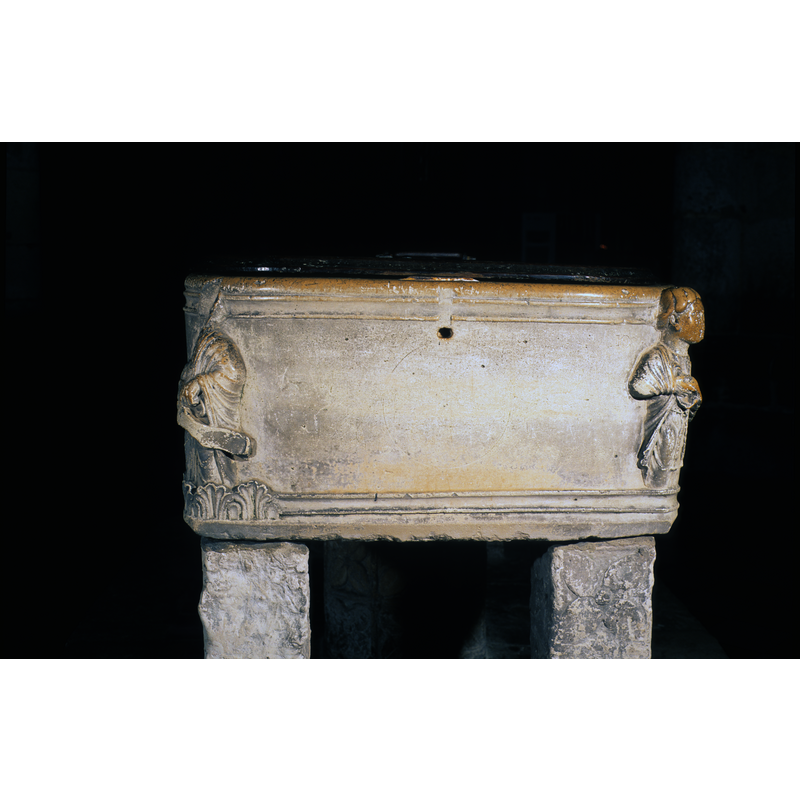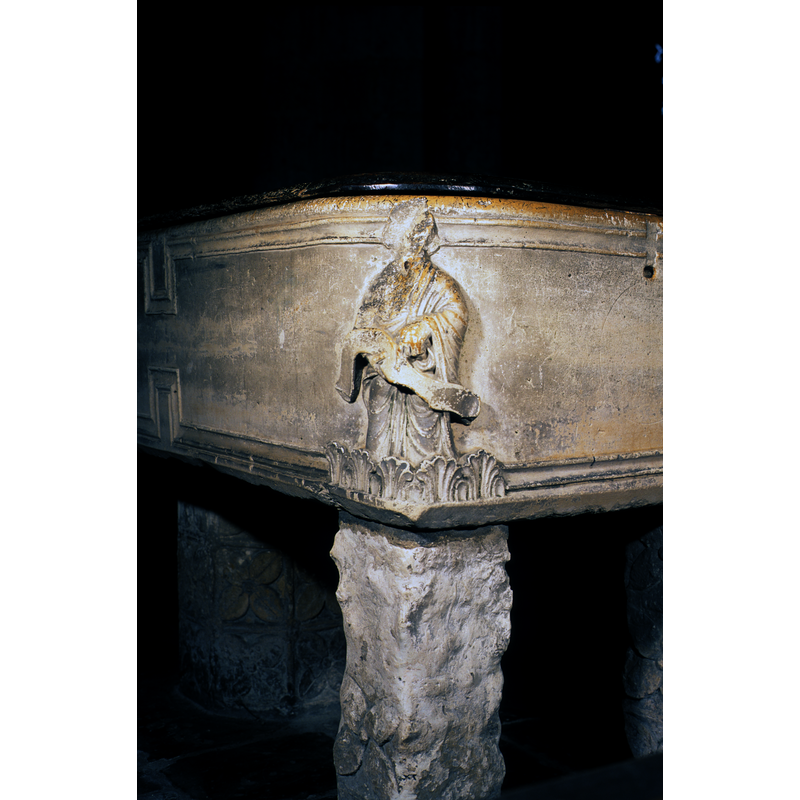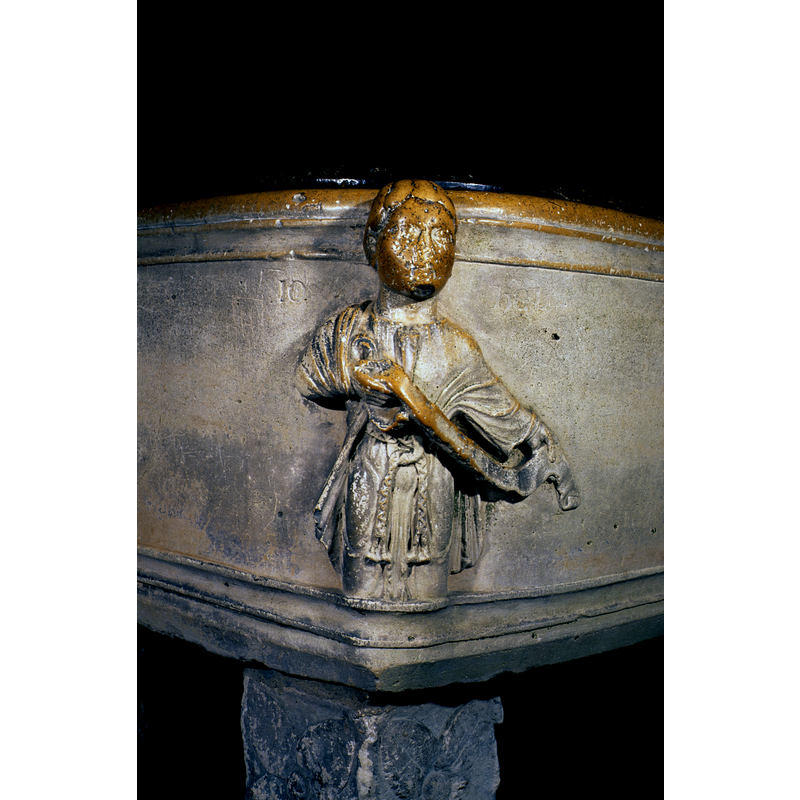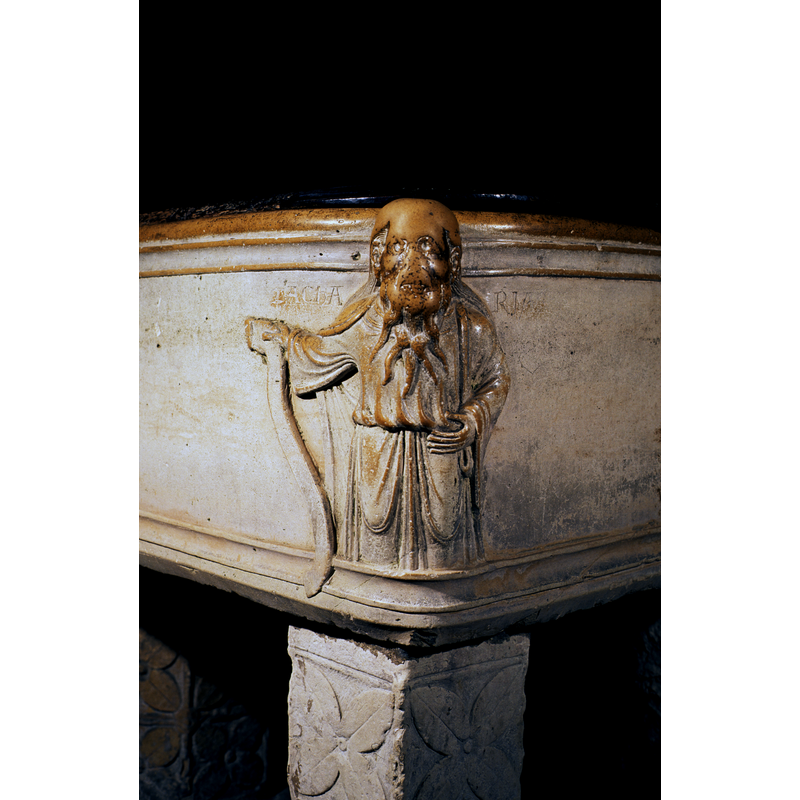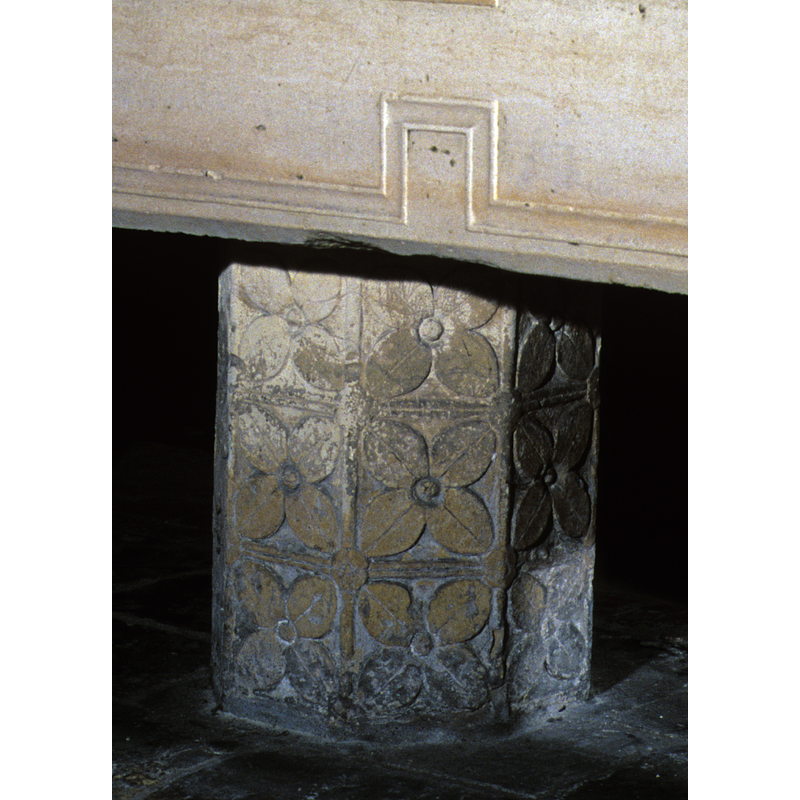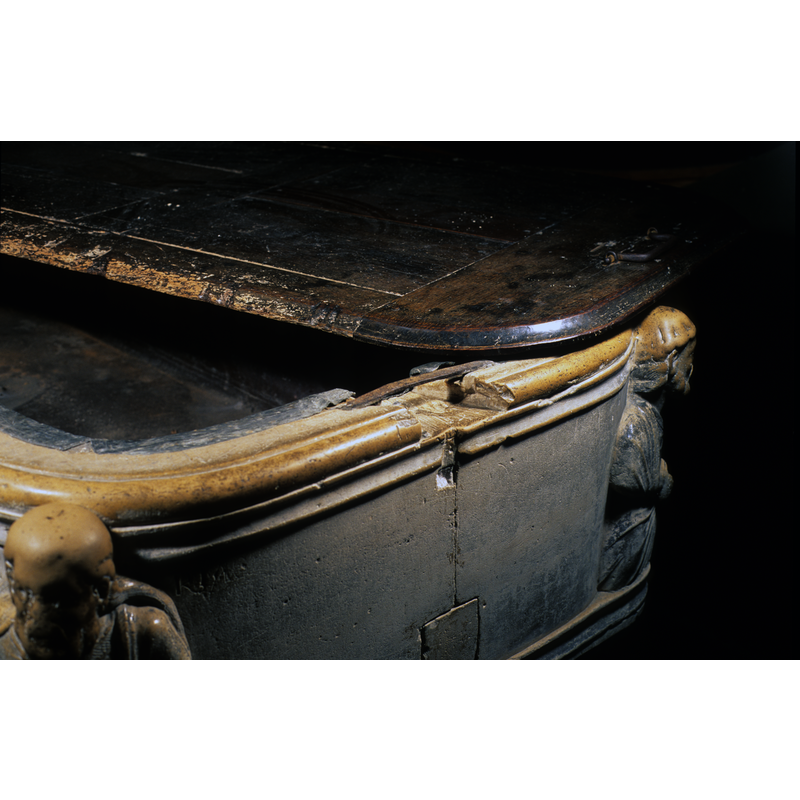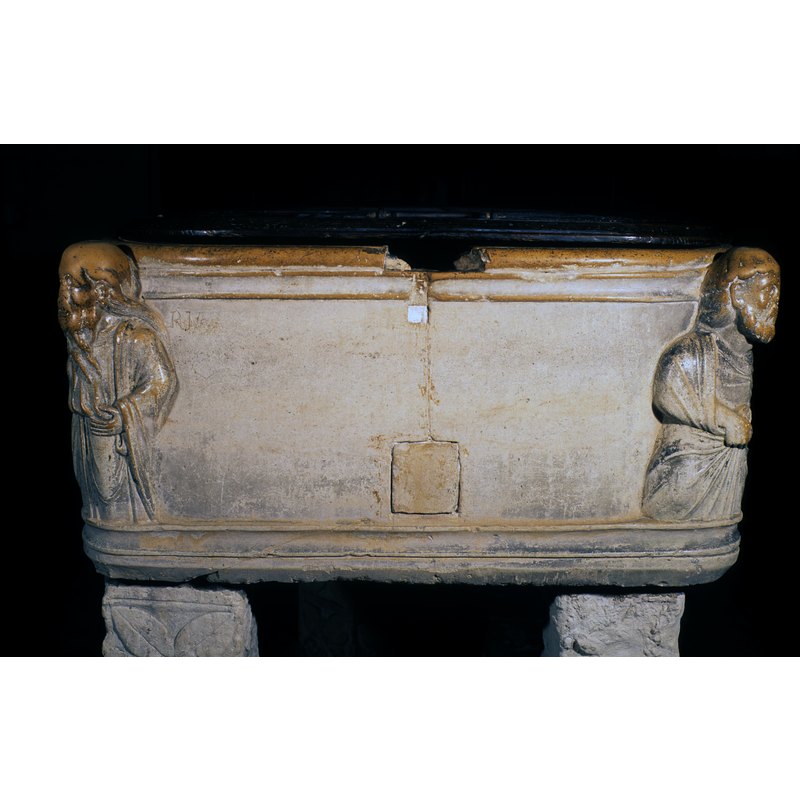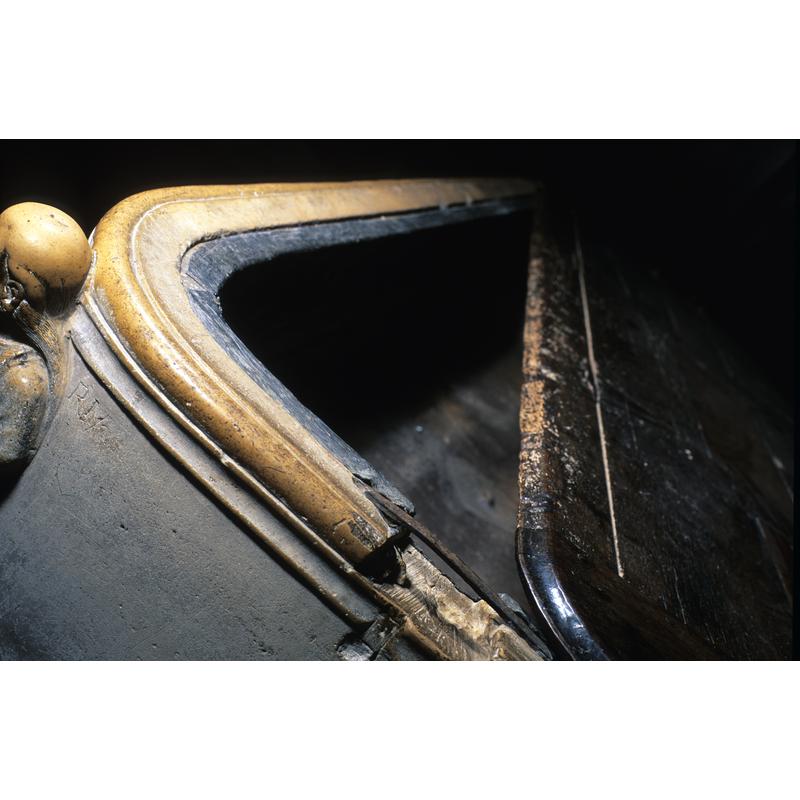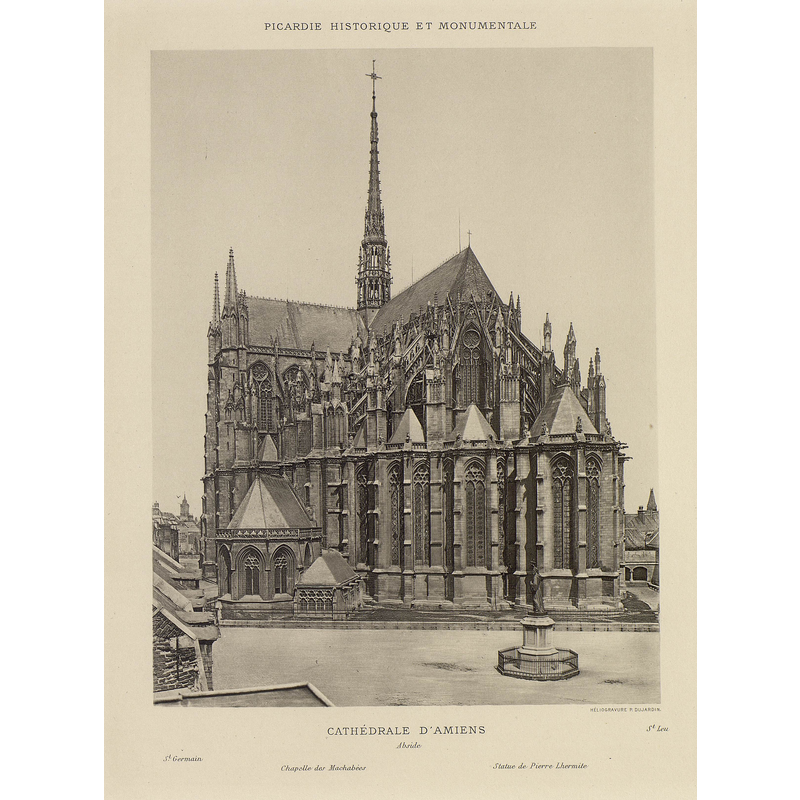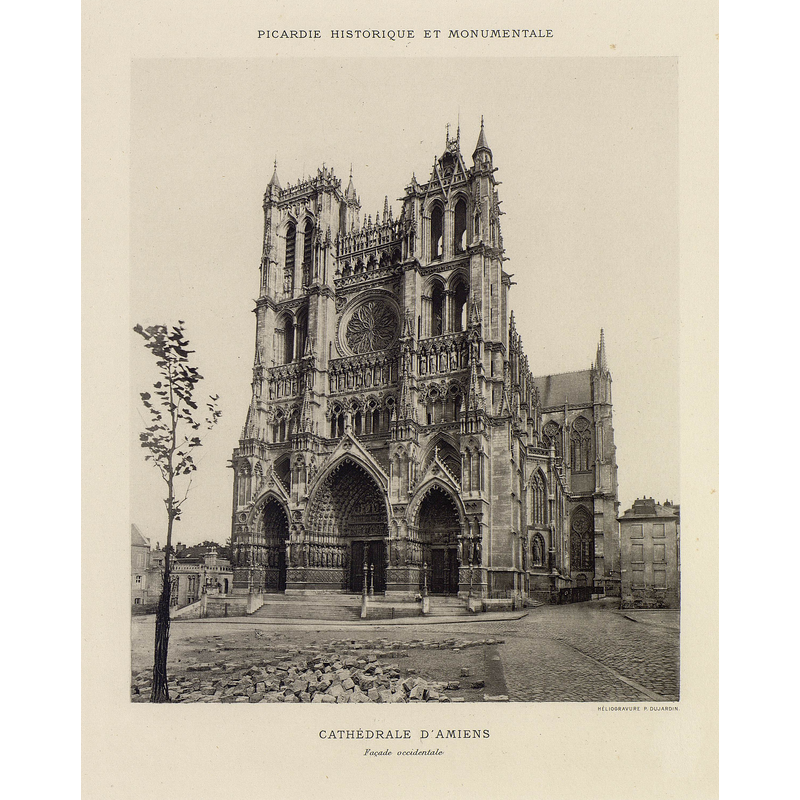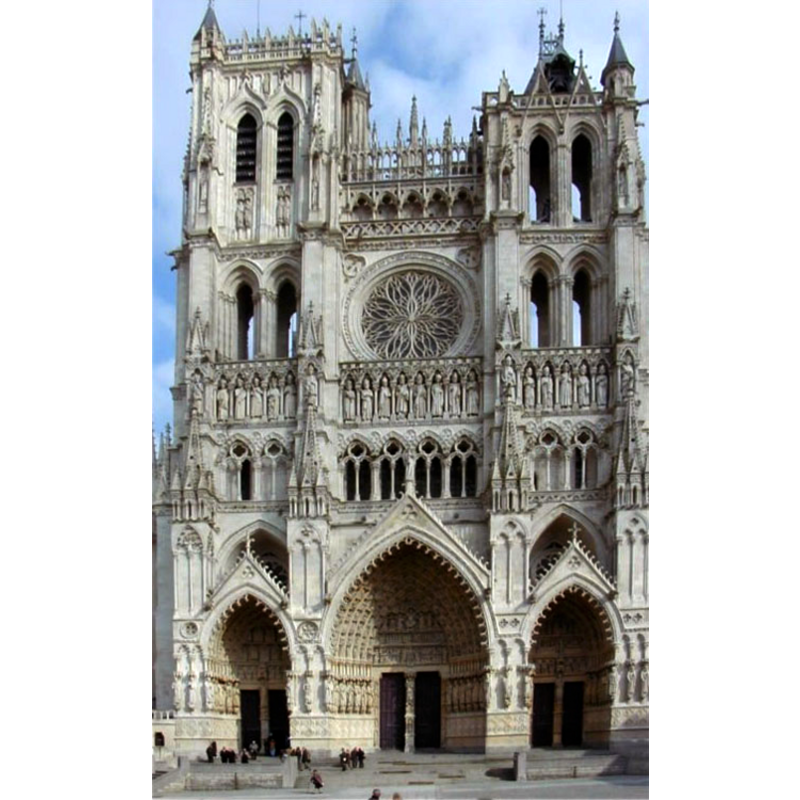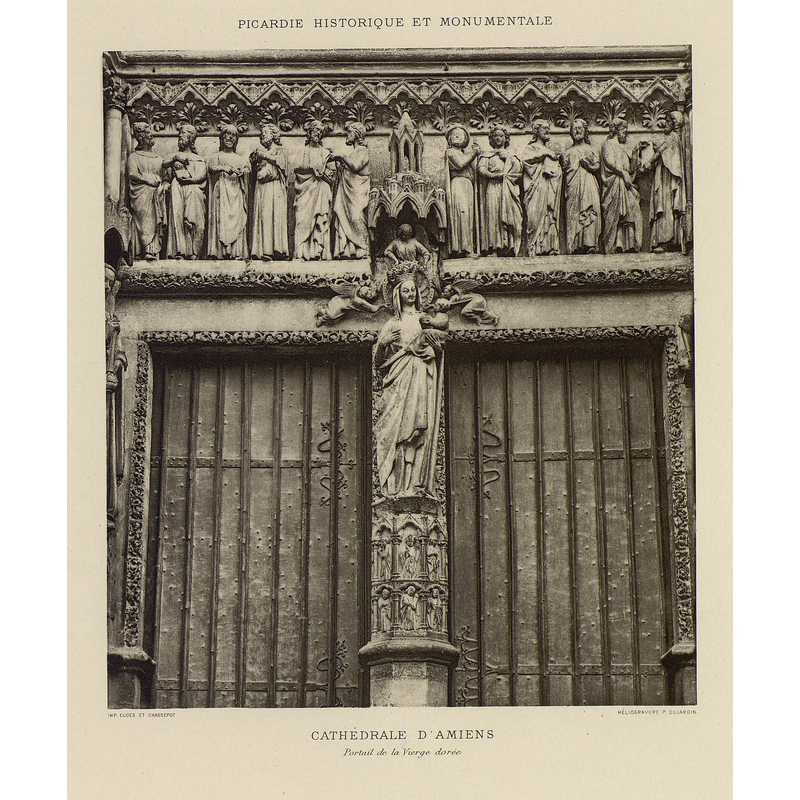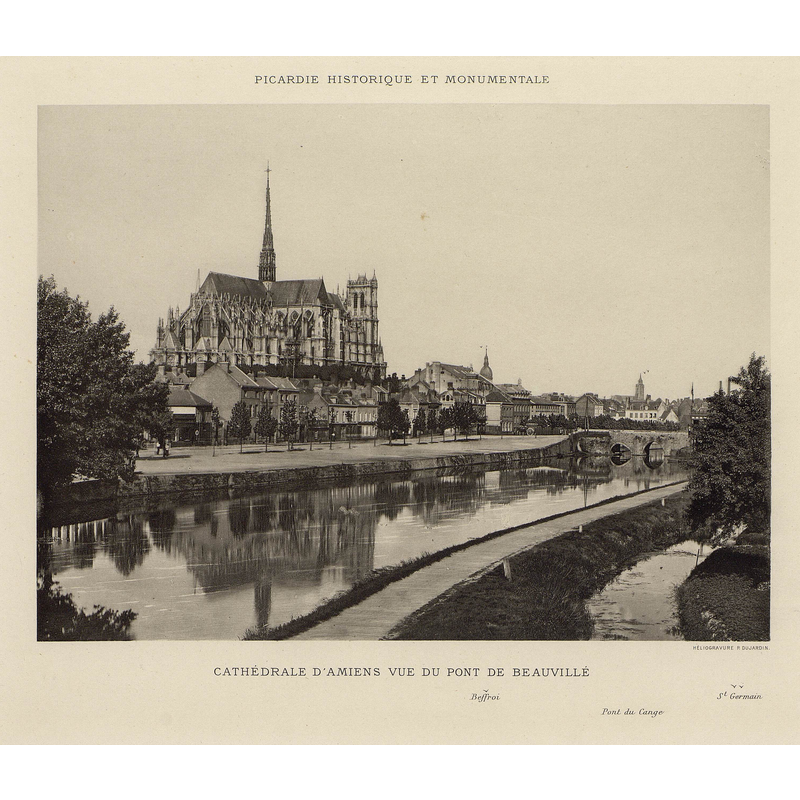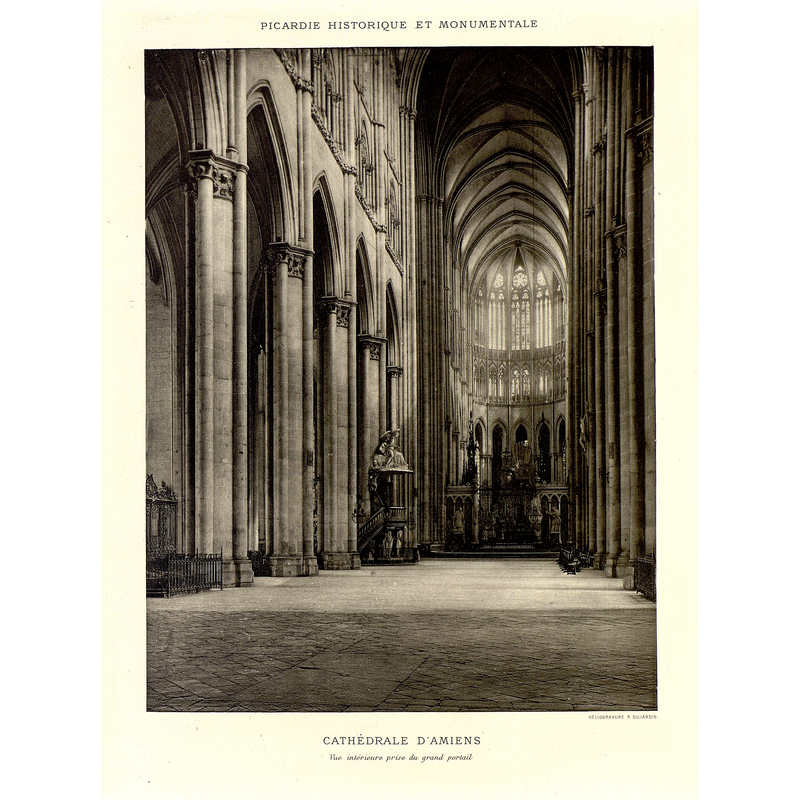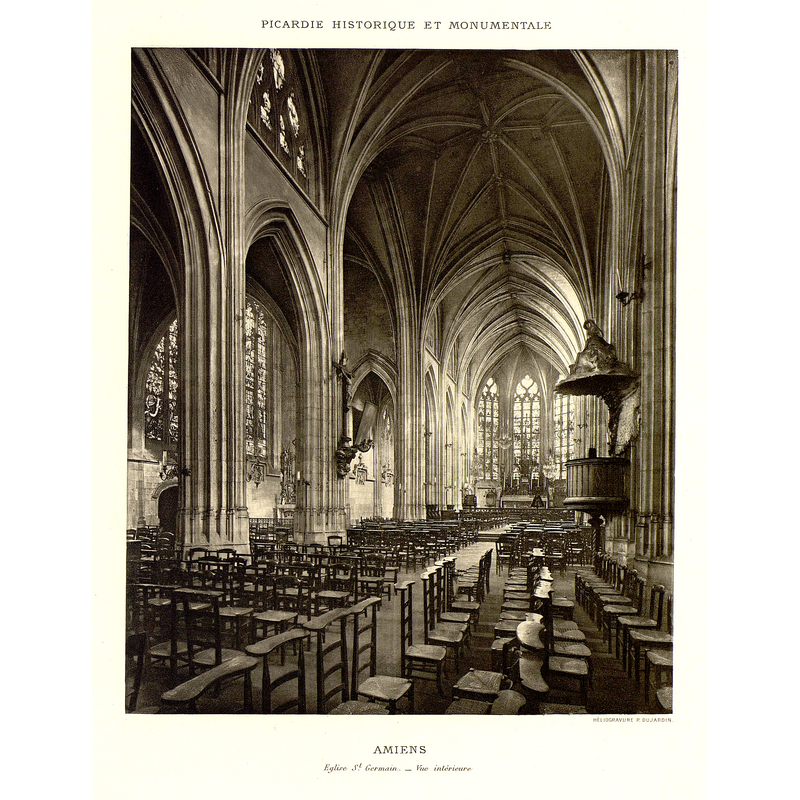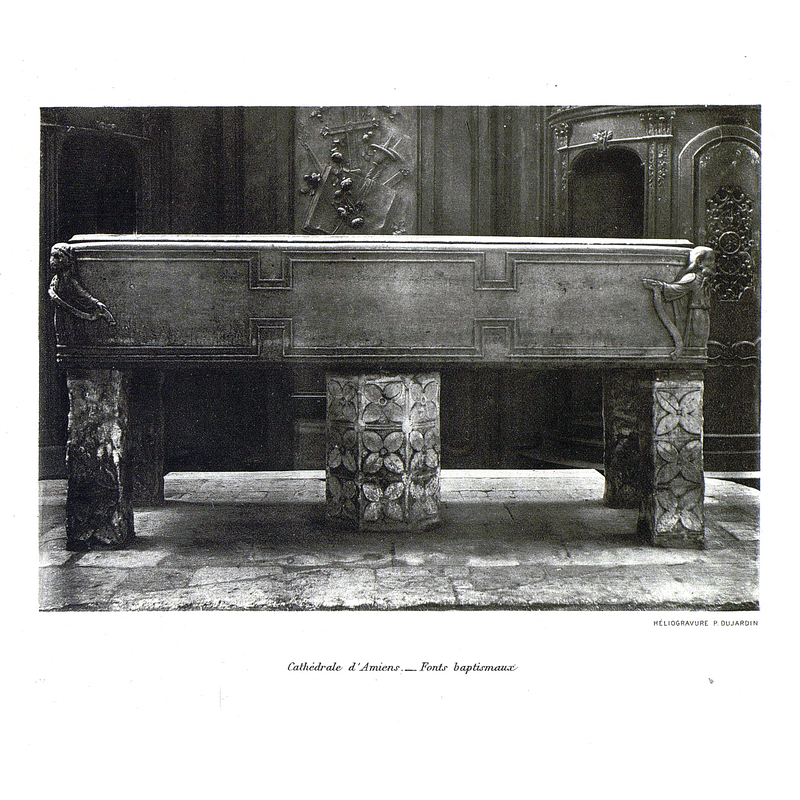Amiens No. 1
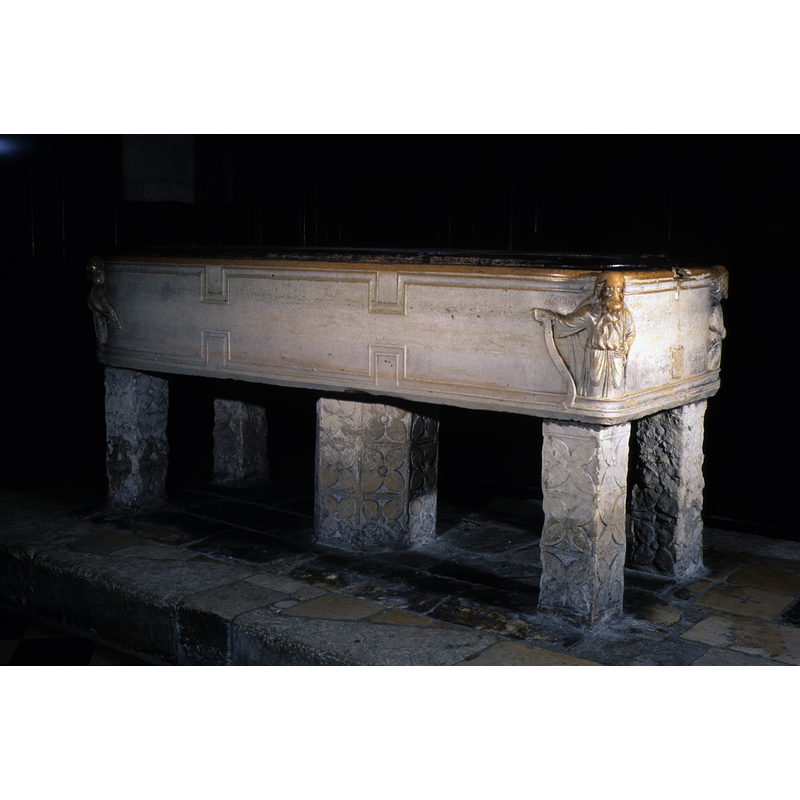
Image copyright © Baptisteria Sacra Index, 2023
Results: 20 records
Old Testament - prophets - busts of prophets - holding scrolls
Old Testament - prophets - unidentified - with scroll
Old Testament - the book of Joel - Joel - with scroll
Old Testament - the book of Zechariah - Zechariah - with scroll
design element - motifs - floral - 4-petal
design element - motifs - foliage
design element - motifs - moulding
design element - motifs - moulding
view of basin - detail
view of basin - interior - detail
view of basin - upper view - detail
view of church exterior - southeast view
view of church exterior - west façade
view of church exterior - west façade - detail
view of church exterior - west portal - detail
view of church exterior in context - northeast view
view of church interior - nave - looking east
view of church interior - nave - looking east
view of font
INFORMATION
FontID: 00357AMI
Object Type: Baptismal Font1
Church/Chapel: Cathédrale Notre-Dame d'Amiens
Church Patron Saints: St. Mary the Virgin
Church Location: 30 Place Notre Dame, 80000 Amiens, France -- Tel.: +33 3 22 80 03 41
Country Name: France
Location: Somme, Hauts-de-France
Directions to Site: Amiens is located off the A29, about 70 km E of Saint-Quentin, 100+ km N of Paris. The cathedral is located off (NE) the old city centre, towards the river
Ecclesiastic Region: Diocèse d'Amiens
Historical Region: Picardie
Font Location in Church: Inside the church, in the E end, N side of the transept
Century and Period: 12th - 13th century, Romanesque
Cognate Fonts: Thoureil [same shape of basin, but much smaller]
Church Notes: The cathedral has a second baptismal font, dated 1672 in an inscription. It is located in one of the chapels right of the altar. It is and oval pedestal font made of black marble and covered with a flat wooden lid.
Font Notes:
Click to view
Rivoire (1806) notes St. Salve miraculously discovered the remains of St. Firmin on 13 January 613, upon which he set to build a church to house the relics, a church chiefly of wood that housed the large baptismal font now in the present cathedral, dating thus the present font to the early-7th century. [NB: Salve (+615) was bishop of Amiens; the legend of the discovery of St. Firmin's remains has several versions, some of which have the church built prior to the discovery of the saint's relics]. An 1835 lithograph of this font in context by Bohomme, printed by Thierry Frères, is in the Archives et Bibliothèque patrimoniale d’Abbeville, 1Fi31/58 [https://patrimoine.abbeville.fr/collection/item/26384-cathedrale-d-amiens-fonts-baptismaux-et-pierre-de-granit?offset=7] [accessed 9 February 2025]. Ruprich-Robert (1855) mentions a noteworthy font here, without further details. Noted in Viollet-le-Duc's Dictionnaire... (1875), as being of the 12th century except for the shafts of the base which he dates to the 13th. He identifies the four corner figures as the "quatre évangélists" despite the inscribed names, and gives the measurements of the basin as 160 cm (long) x 60 cm (wide) x 50 (deep) [NB: on-site measurements taken in our July 2000 visit were 240 x 94 x 37]. He attributes the shape and size "afin probablement de permettre de coucher et d'immerger entièrement l'enfant qu'on baptisait". Noted and illustrated in Brutails (1893) who suggests provenance from the old cathedral and a date in the 12th century. Addison (1914) writes: "The old font at Amiens is very ancient, older than the church. It is seven feet long, and stands on short square peers: it resembles a stone coffin, and was apparently so made that a grown person may be baptized by immersion, by lying at full length. Angels holding scrolls are carved at its four corners, otherwise it is very plain". Lasteyrie (1929) describes it as a former stone trough [="des auges en pierre dure"] and dates the basin tentatively to the second half of the 12th century and the legs to the 13th. Illustrated, with a brief description in André, in Bouilleret's edited volume on the cathedral of Amiens (2012); André suggests the font is probably 11th or 12th-century, and was originally from the old cathedral building that was destroyed in 1218; André further suggests that the five shafts on which it now stands were added in the 13th century to accommodate the old immersion font to the more prevalent practice of baptism by infusion, an example of which he points out in the arch of the cloister that contains the scene of the infusion baptism of Atille by St. Firmin. André mentions that the trough-shaped object had served as baptismal font since time immemorial [="Cette grande cuve de pierre an forme d'auge servait, de temps immémorial, de fonts baptismaux"]. On-site notes: a massive rectangular basin (240 x 94 cm) but relatively shallow (37 cm) dating probably from the 12th or 13th century, like the fabric of the cathedral, which is also massive, the largest of French cathedrals. The corners of the basin have human figures with scrolls; the names which appear next to the figures may very well have been added at a later date. The upper and lower borders of the basin are ornamented with a horizontal line that has two crenellations on each of the long sides. The interior is lined with lead and there is central drain. The basin has a square plugged hole towards the bottom of one of the narrow sides which may or may not be related to drainage. The base consists of a central column and four colonnettes, all square, all adorned with four petal flowers. The plinth is even larger (370 x 198 cm). The wooden lid is flat, probably from the 19th century. Some have suggested that the font was only used for multiple baptisms on special occasions.
COORDINATES
Church Latitude & Longitude Decimal: 49.895, 2.302222
Church Latitude & Longitude DMS: 49° 53′ 42″ N, 2° 18′ 8″ E
UTM: 31U 449884 5527190
MEDIUM AND MEASUREMENTS
Material: stone, marble
Font Shape: rectangular (mounted)
Basin Interior Shape: rectangular
Basin Exterior Shape: rectangular
Drainage Notes: see also notes on font
Rim Thickness: 12 cm*
Diameter (inside rim): 70 x 216 cm*
Basin Depth: 37 cm*
Height of Basin Side: 44 cm*
Basin Total Height: 44 cm*
Height of Base: 66 cm*
Font Height (less Plinth): 110 cm*
Font Height (with Plinth): 133 cm*
Trapezoidal Basin: 94 x 240 cm*
Notes on Measurements: * BSI on-site [NB: the plinth measures 198 x 370 cm] [cf. FontNotes for other measurements reported]
INSCRIPTION
Inscription Notes: The inscribed names appear to have been added at a later date
Inscription Location: at each corner of the basin
Inscription Text: Joel / IOHEL ; ZACHARIA ; [?] ; [?]
Inscription Source: BSI on-site
LID INFORMATION
Date: 19th century (?)
Material: wood, oak
Apparatus: no
Notes: Flat wooden lid measuring 240 x 94 cm; modern
REFERENCES
Amiens, Strasbourg: Nuée bleue, 2012
Addison, Julia de Wolf, Arts and crafts in the Middle Ages: a description of Medieval workmanship in several of the departments of applied art, together with some accounts of special artisans in the early Renaissance, Boston: L.C. Page & Company, 1914
Brutails, Jean-Auguste, La Picardie historique et monumentale, Amiens: Société des antiquaires de Picardie. Fondation Edmond Soyez / Imprimerie Yvert et Tellier, 1893-1899
Davies, J.G., The Architectural Setting of Baptism, London: Barrie and Rockliff, 1962
Lasteyrie du Saillant, Robert Charles, conte de, Architecture réligieuse en France à l'époque gothique (éd. posthume par Marcel Aubert)[2 vols.], Paris: A. Picard, 1926-1927
Lasteyrie du Saillant, Robert Charles, conte de, Architecture réligieuse en France à l'époque romane (2e éd., avec une bibliographie critique par Marcel Aubert), Paris: A. Picard, 1929
Long, E.T., "Dorset church fonts", 44, Proceedings of the Dorset Natural History and Antiquarian Field Club, 1923, pp. 62-76; p. 63
Rivoire, Maurice, Description de l'église cathédrale d'Amiens [...] avec la relation de la Siége [sic] d'Amiens, Amiens: Imprimerie de Maisnel fils [...], 1806
Ruprich-Robert, V., "Bénitiers et fonts baptismaux du Moyen-âge et de la Renaissance", II (1855), Revue générale de l'architecture et des travaux publics, pp. 289-290, Pl. XXVI; p. 289
Stocker, D.A., "Fons et origo: The Symbolic Death and Resurrection of English Font Stones", I (1997b), Church Archaeology, 1997, pp. 17-25; p. 22ff
Viollet-le-Duc, Eugène-Emmanuel, Dictionnaire raisonné de l'architecture française du XIe au XVIe siècle, Paris: Morel & Cie, 1854-1868
